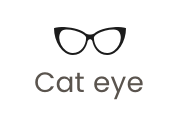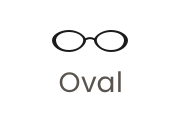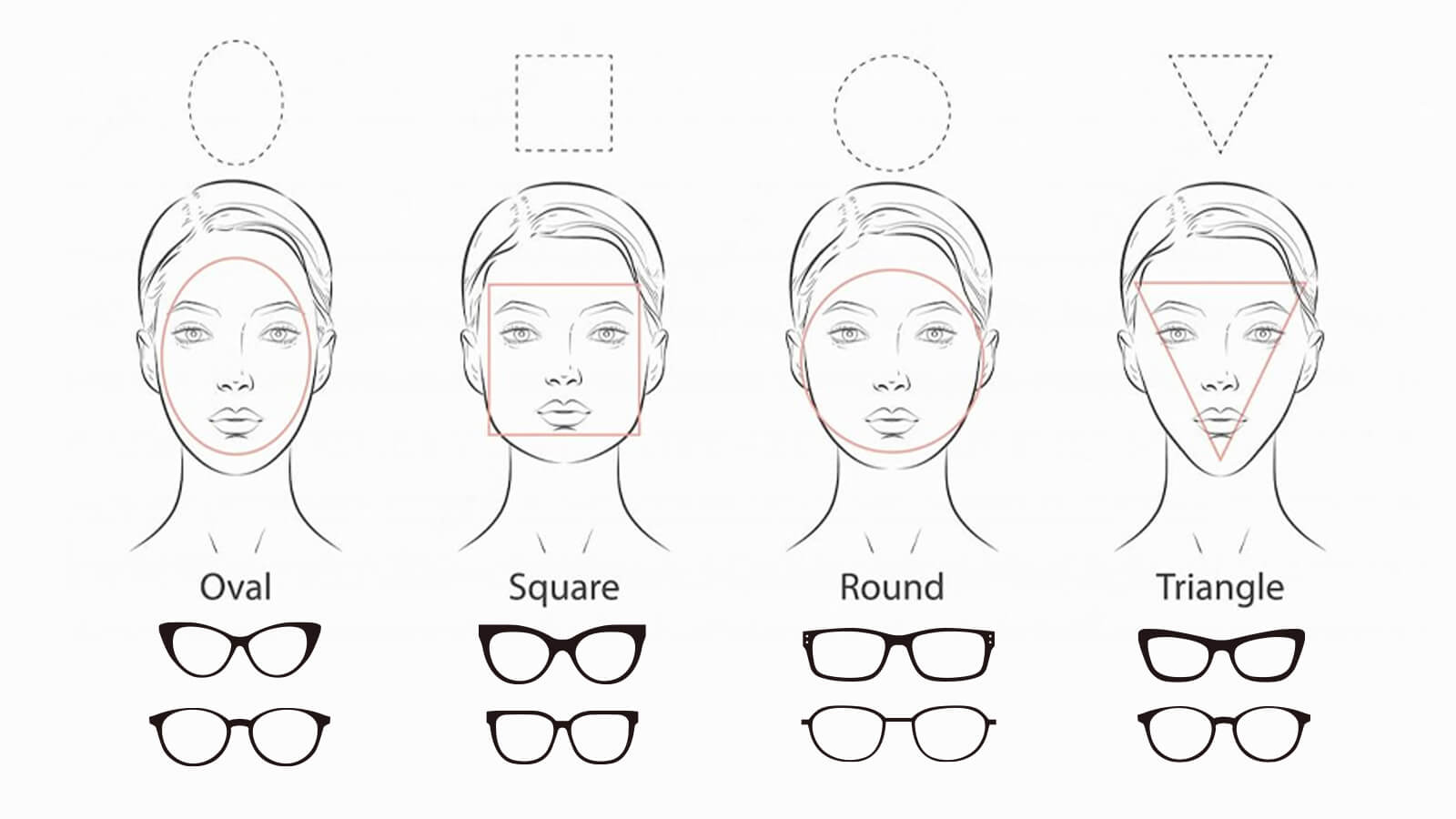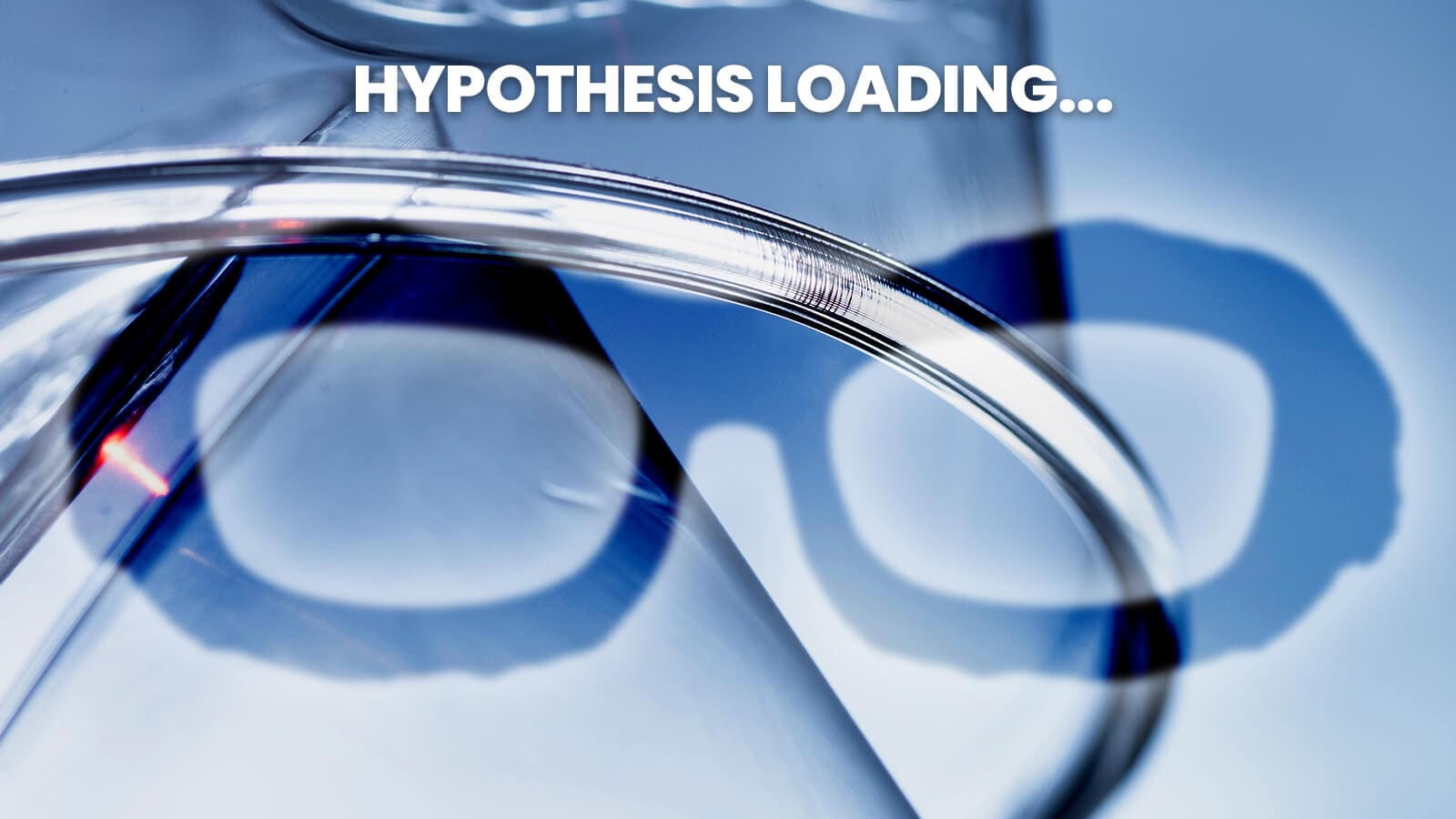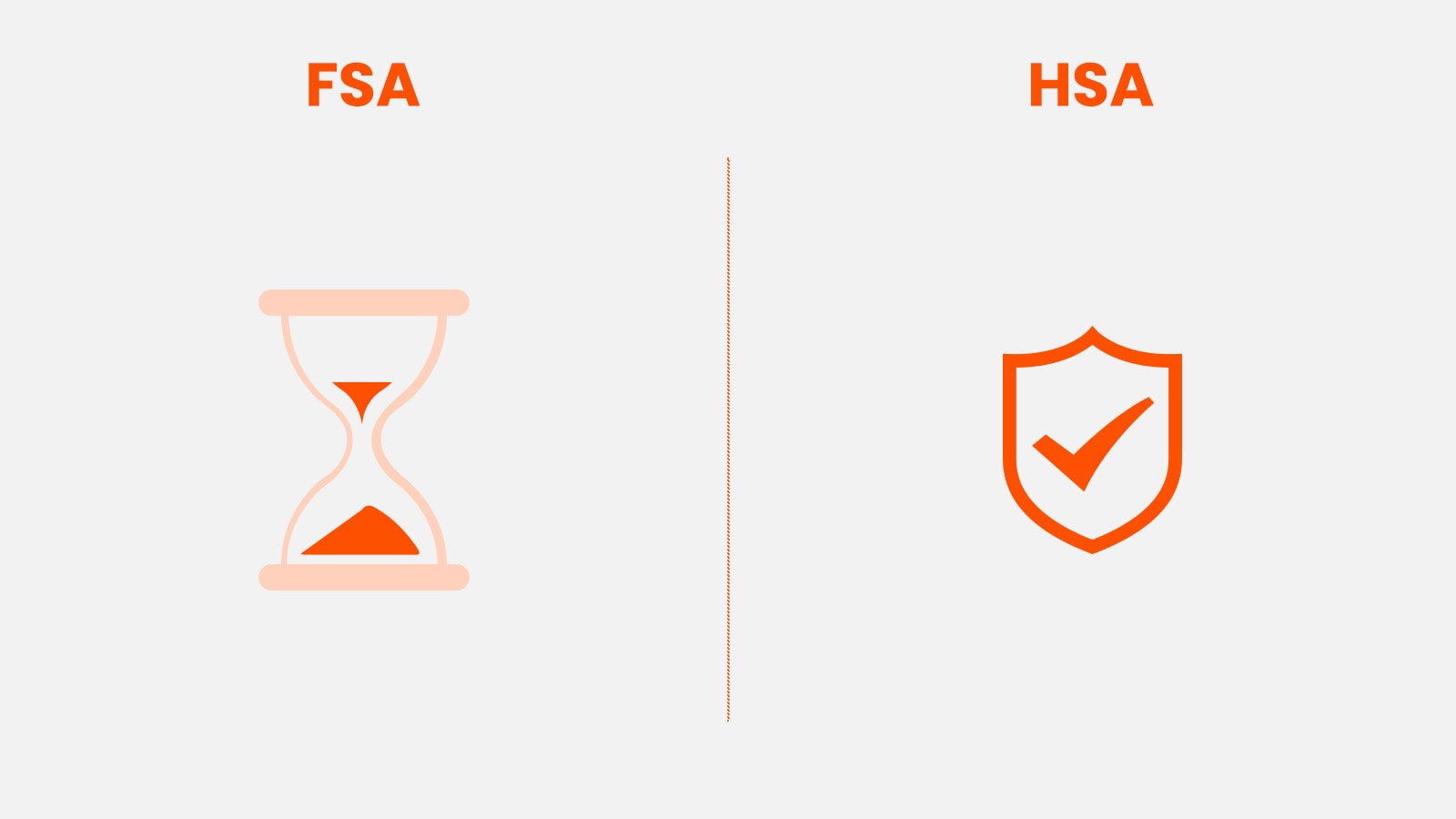
Guide to Picking Glasses That Suit Your Face Shape Perfectly
February 27,2023

What is Boho Style? A Comprehensive Guide to Boho-Chic Fashion
February 13,2025

Virtual Glasses Try On - Find Your Perfect Pair Online
April 02,2024

UV Protection Glasses VS. Blue Light Glasses - Vooglam
July 20,2023

Newest Style Modern Trendy Mens Glasses | Vooglam
March 01,2024

Stylish Reading Glasses: Blending Fashion with Functionality
February 16,2023

What are photochromic lenses & glasses?
September 22,2023

Brown Eyes: The Beauty of the Most Common Hue
September 01,2024

The chubby face glasses for round face female
August 02,2023

What are prisms in eyeglasses?
March 20,2023

What are Bifocal Lenses? - Vooglam
April 14,2023

How to Read Your Eyeglass Prescription?
March 11,2023
SPH, CYL, and Axis Explained: From Quick Reference to Deep Dive
This article is for learning only. Always get your prescription from a real eye exam.
Ever looked at your eye prescription and thought, “What on earth do these numbers mean?” You are not alone. SPH, CYL, Axis, three tiny words that carry a lot of meaning for your vision and how your lenses work. Let's break them down in a way that makes sense. No fluff. No big words. Just straight talk.
This guide is here for two kinds of people:
- The one who needs a quick answer to order new glasses.
- The one who wants to understand what’s really going on with their eyes.
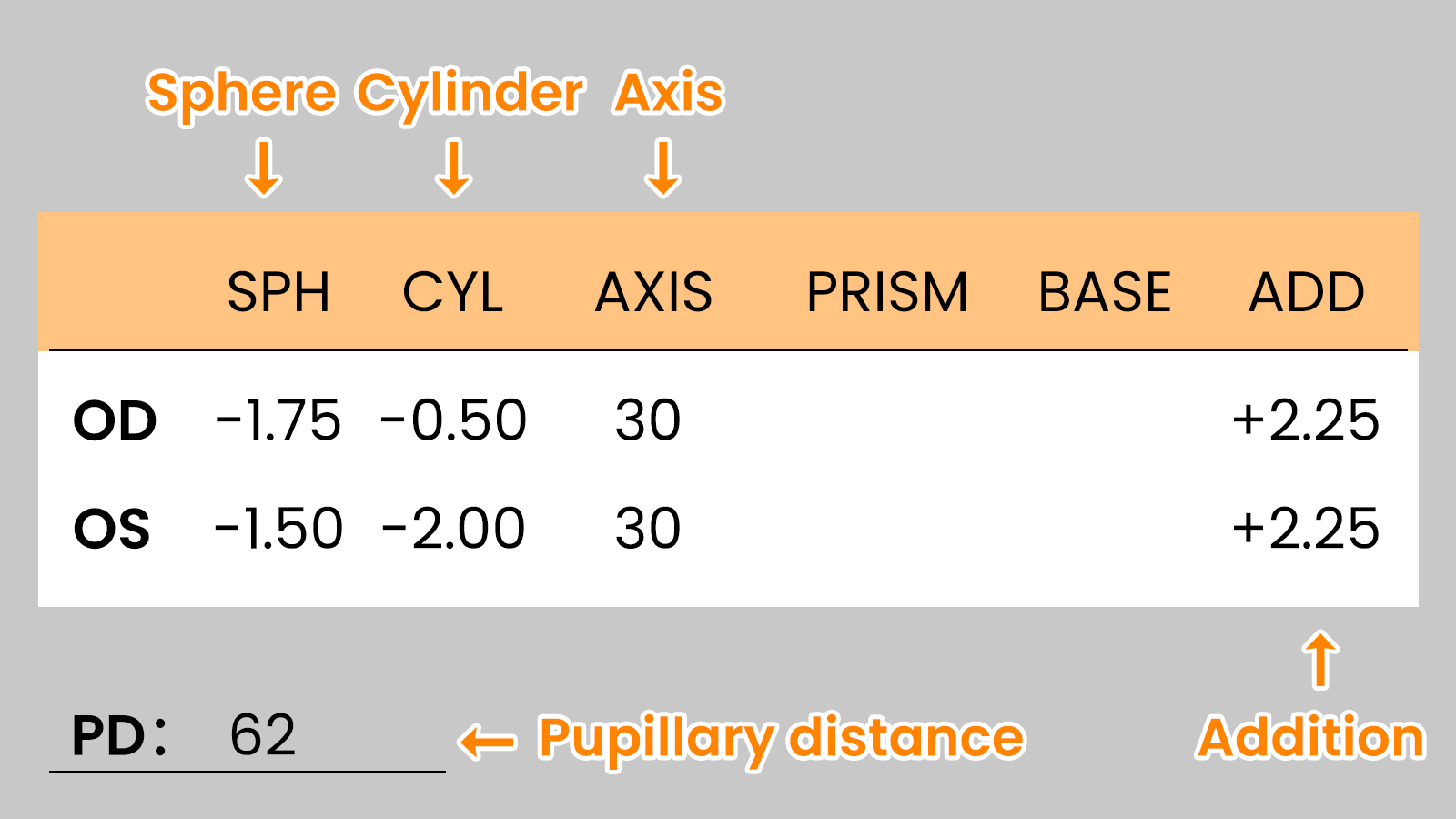
SPH, CYL, and Axis at a Glance
Let’s get straight to it. These are the top three values on any eyeglass prescription:
SPH (Sphere): This corrects blurry vision from being nearsighted or farsighted.
A minus (-) means you have trouble seeing far.
A plus (+) means you have trouble seeing up close.
CYL (Cylinder): This fixes astigmatism. That’s when your eye isn’t shaped perfectly round. You might see blurry at every distance. If this part is blank, you probably don’t have astigmatism.
Axis: This tells the lens maker where to fix the astigmatism. It’s a number from 1 to 180. It only matters if CYL has a value.
Now here's a quick cheat sheet:
Quick-Look Glossary Table
| Abbreviation | Full Name | Simple Definition |
|---|---|---|
| SPH | Sphere | The main lens power for nearsightedness (-) or farsightedness (+). |
| CYL | Cylinder | The secondary power that corrects for astigmatism. |
| AXIS | Axis | The direction (in degrees) of the astigmatism correction. |
| OD | Oculus Dexter | Right Eye |
| OS | Oculus Sinister | Left Eye |
This information is all you need to interpret the core of your prescription. To understand the science behind what is sph, cyl and axis in eye prescription, continue to our in-depth section below.
From Refractive Error to Prescription Value

Myopia and Hyperopia: Corrected by Sphere (SPH)
Your eye has one job: to focus light on your retina. If it doesn’t, vision gets blurry.
Myopia (Nearsighted): Your eye focuses light too soon. Things far away look fuzzy. A concave lens, marked with a minus, spreads light out.
Hyperopia (Farsighted): Your eye focuses light too late. Things up close look fuzzy. A convex lens, marked with a plus, pulls light in sooner.
Both issues are common. SPH corrects them.
Astigmatism: Corrected by Cylinder (CYL) and Axis
Let’s talk shapes. A round ball, like a basketball, bends light evenly. A football shape bends light in two places. That’s what astigmatism does to your eye.
CYL shows how strong the correction needs to be.
Axis shows where to put it.
These two work together. You need both. One without the other won’t do much.
Additional Parameters (ADD, Prism, PD)
You might see more values. Here’s what they mean:
ADD: This is for reading glasses or bifocals. It helps people with presbyopia see up close.
Prism: Used when eyes don’t move in sync. This value helps align double vision.
PD (Pupillary Distance): This measures the space between your pupils. It tells lens makers where to center the lenses.
Eyeglass vs. Contact Lens Prescriptions: Why They Are Not Interchangeable
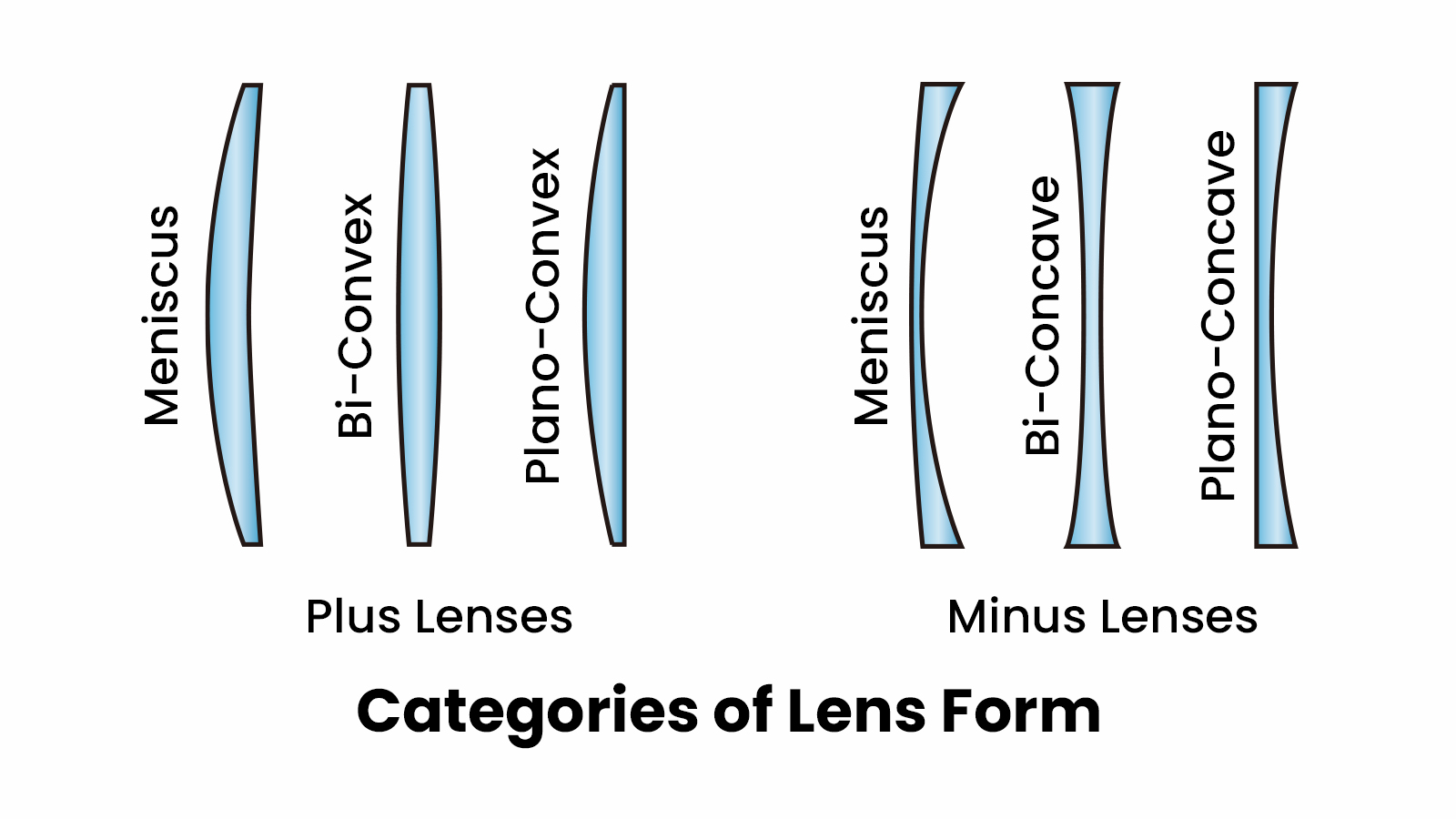
Glasses sit a bit away from your eyes. Contacts sit on your eyes. This small gap, called vertex distance, changes how strong the lens needs to be. Read more on: Contacts vs. Glasses
Contact lens prescriptions include more details:
BC (Base Curve): How curved the lens is.
DIA (Diameter): How wide the lens is.
That’s why you can’t swap a glasses prescription for contacts. It won’t work right.
How to Read a Full Prescription Line: An Example
Let’s look at this: OD -2.50 -1.00 x 180
What it means:
OD = Right Eye
SPH -2.50 = You need help seeing far.
CYL -1.00 = You have astigmatism.
AXIS 180 = That correction goes along the horizontal line of your eye.
Together, your lens will fix both nearsightedness and astigmatism. The correction changes across the lens to match the shape of your eye.
Conclusion
Your prescription may look like a secret code. But now you know it’s just a map; a plan to help your eyes see better.
SPH helps near or far. CYL and Axis fix uneven shapes. The rest fine-tunes the fit.

Knowing this won’t replace your eye doctor. But it will help you choose better frames. You can check if your glasses are made right. You can ask smarter questions next time you're at the optician’s.
Eyewear is not just for clear vision. It’s also your style. Glasses can make you feel bold, soft, quirky, or cool. Whether you go retro, boho, glam, or minimalist, own your look. Vooglam has frames that do more than correct vision. They express you. Pick a style. Enter your prescription. You’re ready. Browse our eyewear collection. Find frames that speak your vibe.
Read your prescription with confidence. Then rock those glasses like you mean it.

Vooglam Blog
Vooglam blog shares professional knowledge about eyeglass frames, lenses, etc., and provides help when purchasing and using eyewear products. At the same time, Vooglam focuses on fashion glasses to interpret the trend of glasses for you.

Why You Should Reserve Your Pair: The Frames Spotted at NYFW
From the Runway to Your Face: The "Hypothesis" is Already ProvenWhen TOMBOGO's design team walked New York Fashion Week wearing the Vision Tools collection, they weren't showcasing concept pieces dest
December 16,2025
Vision Tools/Hypothesis: First Look at the TOMBOGO x Vooglam Collection
Having debuted earlier this year at NYFW Vision Tools/ Hypothesis now a fully realized, and released system. It is a limited edition designer collaboration that takes from Tombogo's Vision Tools philo
December 13,2025
Can You Use HSA for Glasses? (Yes, and Here Is How)
If you have a Health Savings Account (HSA), you are sitting on a powerful financial tool. Unlike a standard bank account, it’s tax-free. And unlike a Flexible Spending Account (FSA), the money is your
December 11,2025
FSA Sunglasses: How to Buy Stylish Shades Tax-Free
Imagine walking out of a store with a pair of high-quality, polarized, designer-style sunglasses, and your bank account balance stays exactly the same.It sounds like a loophole, but for millions of Am
December 11,2025











